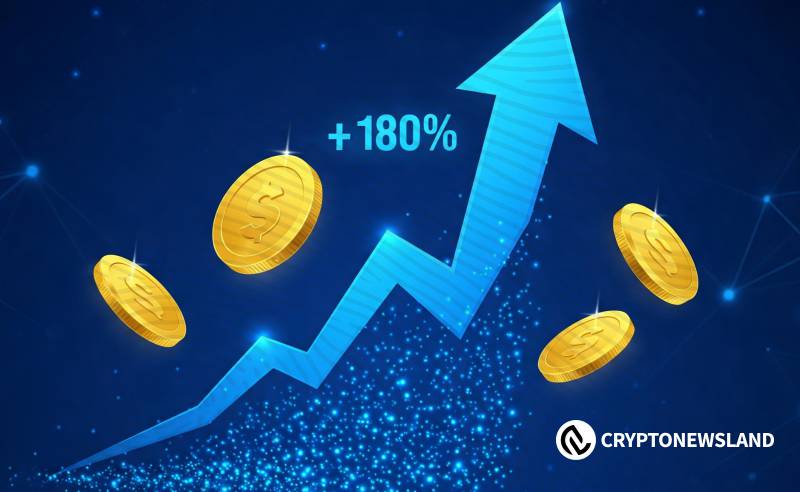 CaryptosHeadlines Media Has Launched Its Native Token CHT.
Airdrop Is Live For Everyone, Claim Instant 5000 CHT Tokens Worth Of $50 USDT.
Join the Airdrop at the official website,
CryptosHeadlinesToken.com
CaryptosHeadlines Media Has Launched Its Native Token CHT.
Airdrop Is Live For Everyone, Claim Instant 5000 CHT Tokens Worth Of $50 USDT.
Join the Airdrop at the official website,
CryptosHeadlinesToken.com
- Jupiter’s liquidity aggregation on Solana optimizes trade flexibility and now includes a debit card partnership with Sanctum for seamless DeFi transactions.
- Curve’s low-fee AMM platform, focused on stablecoins and pegged assets, rewards liquidity providers with CRV tokens while minimizing slippage.
- Lido DAO revolutionizes Ethereum staking with liquid staking solutions, allowing users to participate without the technical barrier of setting up validator nodes.
Top altcoins to watch this include Jupiter, Curve, Lido DAO, and Tezos are shaping the future of decentralized finance by providing innovative solutions for liquidity aggregation, stablecoin swaps, staking, and blockchain security. As DeFi platforms evolve, these projects are enhancing user experiences with low-fee structures, flexible trading options, and seamless integration with traditional finance.
Jupiter: Liquidity Aggregation on Solana
Source: Coinmarketcap
Jupiter works as a decentralized exchange aggregator inside the Solana ecosystem, routing liquidity through its sophisticated swap engine. It also allows for limit orders, dollar cost averaging (DCA), time weighted average price (TWAP) and perpetual trading among a vast spread of DeFi services. The purpose is to provide easier trade potential as well as flexibility to the user.
Recently, Jupiter also announced a strategic partnership with Sanctum to launch a debit card on the SOL blockchain that aims to bring the utility of digital assets into everyday financial transactions. This is a huge stride in connecting regular financing with DeFi.
Presenting a circulating supply of 1.35 billion JUP tokens, the platform ensures controlling its stock in the market while also having friendly interface in an attempt to drive more blockchain adoption.
Curve: AMM and Stablecoin Ecosystem
Source:Coinmarketcap
Curve is recognized for its automated market makers (AMM) which are optimized for stablecoins and pegged assets. With Curve, slippage is minimized during swaps between similar value tokens. Curve provides DeFi services including crvUSD stablecoin, Curve Lend and yield generating saving protocols. LLAMMA (Lending-Liquidating AMM Algorithm) is the basis of all lending operations.
CRV token has the role of a governance token and a liquidity incentives token. CRV is rewarded to liquidity providers and distributed subsequently to deposit duration and capital contribution. Also the platform was designed in such a way to maintain a low fee structure to help the earnings of liquidity participants without being high for the users.
Lido DAO: Liquid Staking Infrastructure
Source:Coinmarketcap
Lido DAO provides liquid staking solutions, in particular for Ethereum. Users deposit ETH and receive stETH in return, a derivative with value and can be used in secondary markets. By doing so, they are no longer needed to provide 32 ETH in order to setup validator nodes, or acquire tech support.
LDO are the tokens that allow holders to vote on protocol updates and governance proposals for the DAO, which is what governs Lido. Then by Lido V2, the platform became more modular and safe and so is used in LSDFi protocols. Solana has been pulled from the platform with the crypto operation boundary on Ethereum and Polygon.
Tezos: Self-Amending Blockchain Protocol
Source:Coinmarketcap
The Tezos blockchain platform is open source, and it focuses on formal verification and code security. LPoS based, users can delegate or do the actual block validation.
The protocol’s on chain governance gives stakeholders the ability to suggest and vote on network upgrades. There is a unique five cycle voting process which assures decentralized decision making. The Tezos 2.0 is meant to offer support for multiple programming languages and better composability with Layer 2 solutions.
Stability is brought to Tezos in the long run by its uninterrupted mainnet operation as well as support from staking from major exchanges like Coinbase and Binance.











